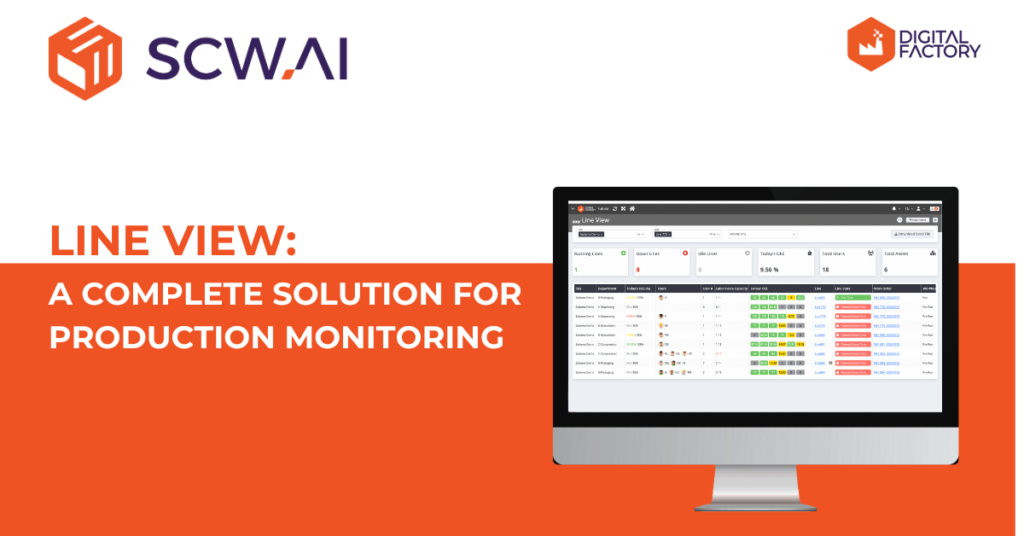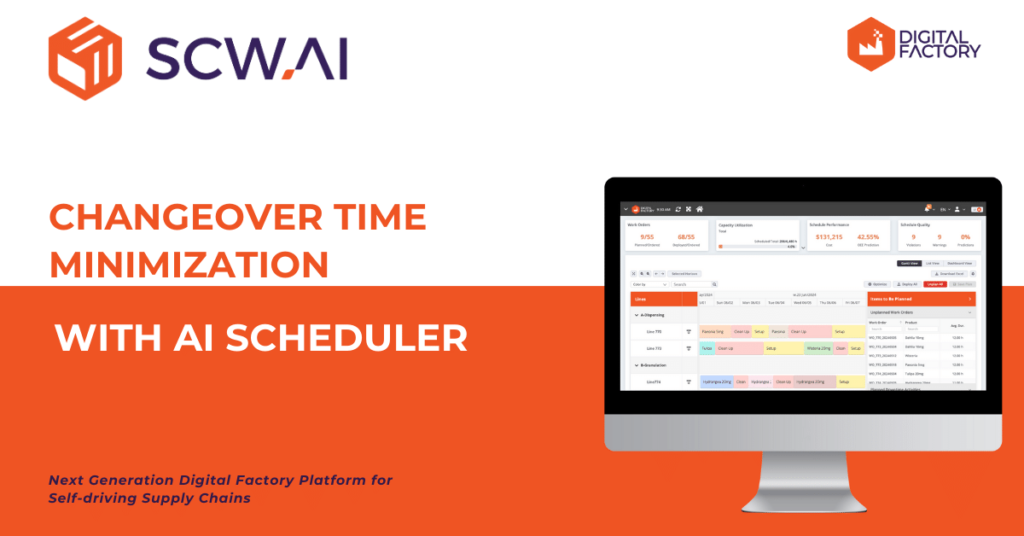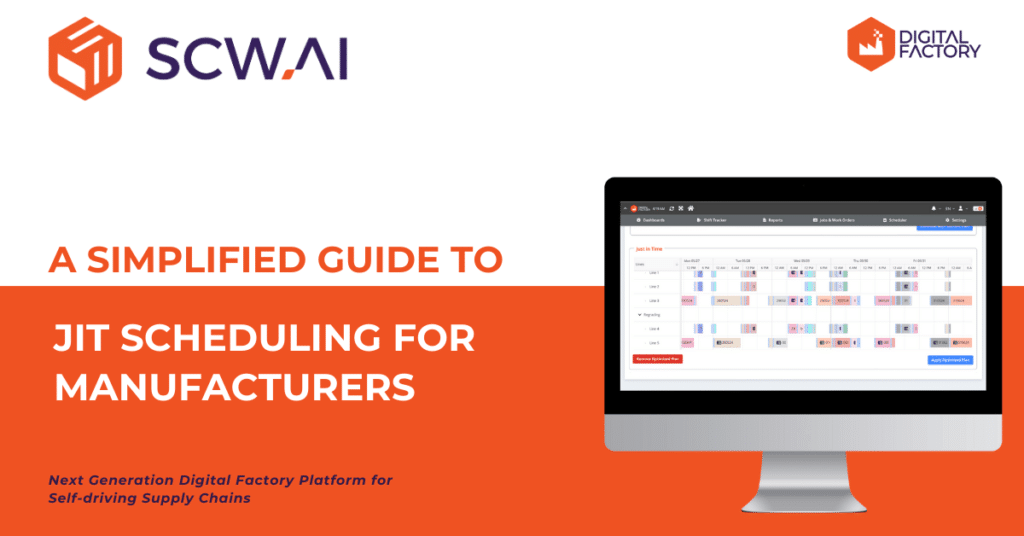High-quality data serves as the backbone of production tracking through Industry 4.0 technologies, whether they involve real-time dashboards, AI models, or digital twins. For factories equipped with modern equipment, OPC connection stands out as one of the most effective methods to collect line and machinery data and integrate it with cloud, ERP, and MES platforms through API integrations.
However, according to McKinsey, only a small percentage of factories utilize OPC connection, which may be attributed to a lack of information on the topic. This article serves as a simplified, comprehensive guide for manufacturing leaders seeking to understand data management via OPC connection and how SCW.AI can help you to ensure machine to machine communication in your factory.
What is OPC?
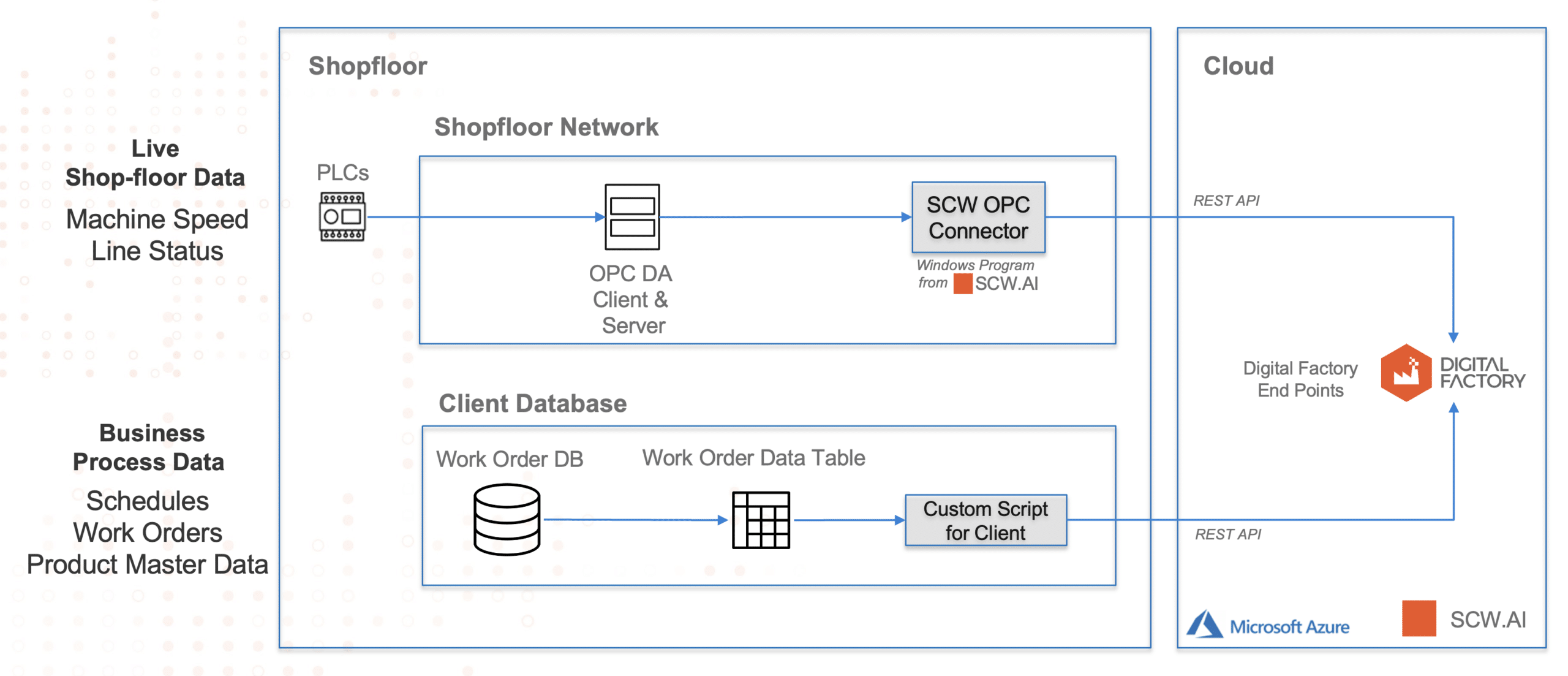
OPC (Open Platform Communications) serves as a conduit for gathering automated high-quality data directly from machines and seamlessly connecting this data to various digital tools utilized by manufacturers, including cloud computing manufacturing solutions, ERP (Enterprise Resource Planning) other manufacturing optimization tools, and AI or digital twin applications. OPC is a data gathering option for factories equipped with contemporary machines, facilitating efficient data exchange and integration across the manufacturing environment.
To illustrate the data gathering via OPC connection, let’s consider a real-life analogy. Imagine you are tracking the speed of a car. One way, you might rely on periodic observations of its location over time to calculate its average speed. By increasing the frequency of these observations, you can approximate the car’s real-time speed more precisely. This method mirrors data gathering via IoT (Internet of Things) integration in a factory, where data is collected intermittently and processed to derive insights.
However, gathering factory data via OPC connection takes this analogy a step further. It is akin to having a sophisticated database within the car that records its real-time speed continuously, without interruption. This data is then made available for immediate access via API (Application Programming Interface) integration, enabling seamless sharing with other databases in real-time. As a result, manufacturers can ensure accurate, high-quality data collection and integration across their digital infrastructure, empowering informed decision-making and optimizing operational efficiency.
It is important to note that not every factory equipment is suitable for OPC connection since it is a complementary machinery technology. Therefore, for some factories utilizing IoT tools can be the only way of collecting real-time data.
What Kind of Data Can be Collected via OPC Connection
OPC connections enable the collection of various types of data crucial for optimizing manufacturing processes. This includes:
- Real-time process data: Parameters such as production count, temperature, pressure, flow rate, machine status (run-time, down-time) and failure details of machine can be monitored in real-time, providing insights into ongoing operations.
- Historical data: OPC servers can archive historical data, allowing manufacturers to analyze past performance, identify trends, and make data-driven decisions.
- Alarm and event data: OPC facilitates the transmission of alarms and events generated by industrial equipment, enabling timely responses to anomalies and issues on the factory floor.
Top 5 OPC Connection Use Cases
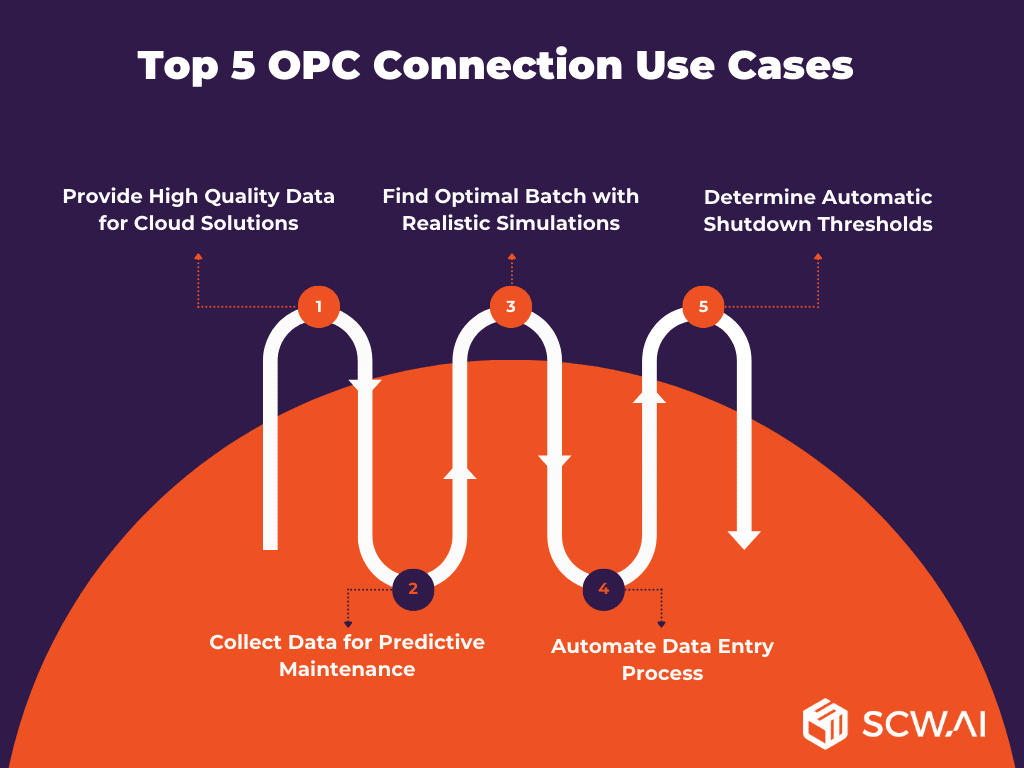
1. Provide High Quality Data for Cloud Manufacturing Solutions
According to McKinsey, almost two-thirds of manufacturing companies actively use cloud solutions, such as SCW.AI’s Digital Factory Platform, to improve their visibility, productivity, and agility.
Cloud solutions offer diverse digitalization capabilities for manufacturers, ranging from OEE and TEEP dashboards providing insights on real-time machine and line efficiency and utilization, to tracking labor activities, AI capabilities for scheduling automation, and paperless manufacturing solutions for documentation-related activities.
However, regardless of the use case of cloud platforms, they require high-quality and real-time data to generate value. OPC connections ensure that relevant data from various sources within the manufacturing environment is seamlessly integrated into cloud-based systems. This enables real-time monitoring, analytics, and decision-making, ultimately enhancing operational efficiency and flexibility.
2. Collect Data for Predictive Maintenance
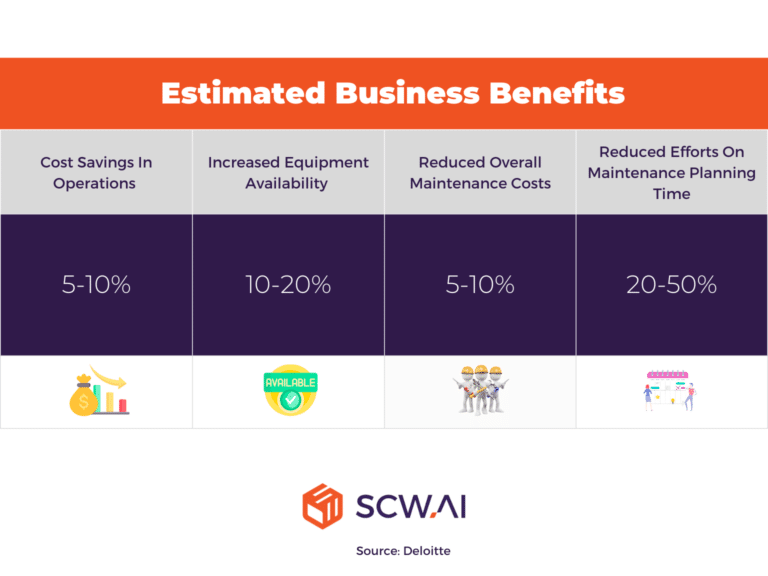
Predictive maintenance is a proactive approach to equipment maintenance that relies on data analysis of machine learning models to predict potential failures before they occur. It has potential benefits, such as increasing equipment availability by up to 20% per Deloitte.
Despite the benefits of predictive maintenance, the main challenge is training a machine learning model to forecast machine downtime with high accuracy. Such models are often trained using historical data on:
- Mean time to failure
- Mean time to repair
- Mean time between failures
- Production speed of machines
- Vibration levels
- Temperature
- Energy consumption, and more, depending on the industry and line.
An OPC connection to the AI model is one way to ensure the quality of data for predictive maintenance. Real-time data gathered directly from the machine assists algorithms in identifying exact relationships with factors affecting equipment downtime.
3. Find Optimal Batch with Realistic Simulations
By leveraging high-quality data gathered from equipment via OPC connections, manufacturers can establish correlations between various machine parameters (e.g., speed) and sector-specific operation settings, as well as equipment data (e.g., heat, vibration, electric current) with key performance indicators (KPIs) like OEE, takt time, and energy consumption.
With this wealth of data at their disposal, manufacturers can create digital twins of their factories, accurately simulating the behavior of production lines and processes under different conditions. By adjusting parameters within the digital twin environment, such as machine settings, material inputs, and production schedules, manufacturers can conduct virtual experiments to identify optimal batch configurations without incurring any physical risk.
Imagine a scenario where a manufacturer seeks to optimize the batch size for a particular product line. By manipulating variables such as machine speed, cycle time, and material flow rates within the digital twin, they can simulate various production scenarios and assess their impact on key metrics like throughput. Through data-driven trial and error, managers can iteratively refine their processes, identifying the most efficient combination of parameters to ensure line balancing, maximum productivity and minimum waste.
Once optimal parameters have been determined within the digital twin environment, manufacturers can then apply these findings to their physical production lines with confidence. By aligning theory with practice, they can validate the effectiveness of their proposed changes and ensure smooth implementation on the factory floor.

4. Automate Data Entry Process
The OPC connection eliminates the need for manual data entry for reporting machine status or production count. Thus, OPC reduces the risk of human error, and ensures data accuracy and integrity across the manufacturing workflow.
These benefits are realized by producers in several ways:
- Manual data entry can consume up to one-third of operator time in some sectors and tasks. Utilizing employees for this automatable task is inefficient, as they could have spent this time on maintenance activities or production if the factory gathers shop floor data via OPC connection.
- When operators enter data manually, its quality diminishes due to data duplications, omissions, and simple entry errors occurring more frequently.
- Finally, manual data entry does not provide real-time production data. In such cases, updating dashboards with refreshed data becomes impossible, as well as taking real-time actions for line leaders and executives.
5. Increase Equipment Lifespan by Determining Automatic Shutdown Thresholds
OPC connections enable manufacturers to set automatic shutdown thresholds based on predefined criteria such as temperature, vibration, and energy consumption. When these thresholds are exceeded, the equipment can be automatically shut down or adjusted to prevent damage, thereby prolonging its lifespan and reducing maintenance costs.
For instance, if historical data of equipment highlights a correlation between machine temperature exceeding 80 degrees Celsius and a breakdown, it is beneficial for factories to stop its operation in advance when the temperature of the equipment reaches this specific threshold.
Why Do Factories Need a Technology Vendor for OPC Connection?
Implementing and maintaining OPC infrastructure requires specialized knowledge and expertise. Technology vendors specializing in OPC provide manufacturers with tailored solutions that address their specific needs, from initial system design and configuration to ongoing support and maintenance.
These vendors possess in-depth knowledge of OPC standards and protocols, ensuring seamless integration with existing systems and maximum interoperability across the manufacturing environment.
Connect Your Shop Floor to Digital Factory Platform via OPC
SCW.AI assists manufacturers with suitable machines to gather machinery data directly via OPC connection. This data can be displayed on informative reports and dashboards of the Digital Factory Platform, such as:
- OEE Waterfall
- Daily Production Performance Dashboard
- Maintenance Performance Report
- Global–Site–Line–Station Views and many more.
Additionally, we can assist you in utilizing this data for training predictive maintenance models and generating a digital replica of your factory. To learn more about the Digital Factory Platform and SCW.AI, you can book a demo now.
